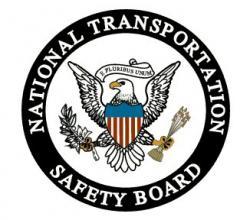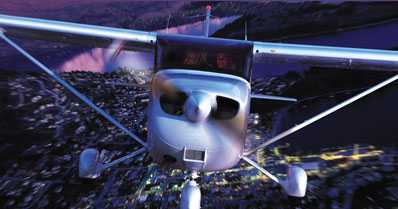Tue, Jun 16, 2009
NTSB Releases Probable Cause Report
 The NTSB has released its probable cause report for a mid-air
collision in January, 2008 which killed four people in two aircraft
and one on the ground. The incident, which happened January 20th of
last year, involved a Cessna 150, piloted by 24-year-old
Anthony Guzman, and a Cessna 172, flown by 73-year-old Paul Carson.
Both pilots were instrument rated, though the accident happened
under VFR conditions.
The NTSB has released its probable cause report for a mid-air
collision in January, 2008 which killed four people in two aircraft
and one on the ground. The incident, which happened January 20th of
last year, involved a Cessna 150, piloted by 24-year-old
Anthony Guzman, and a Cessna 172, flown by 73-year-old Paul Carson.
Both pilots were instrument rated, though the accident happened
under VFR conditions.
The NTSB found:
A Cessna 172N and a Cessna 150M collided in-flight while
maneuvering 1.4 miles southwest of the uncontrolled airport during
day visual meteorological conditions. The midair collision occurred
about 2 minutes after the Cessna 150M had taken off from runway 25,
turned crosswind, and was entering on the downwind leg.
Radar data shows that during this time, a Cessna 172N completed
a course change maneuver and was proceeding inbound toward the
airport on a 034-degree true course, which approximated the
45-degree traffic pattern's entry path to the downwind leg. The
north-northeast-bound Cessna 172N impacted the right side of the
southeast-bound Cessna 150M after the airplanes were flying on
converging courses for about 13 seconds. The collision angle was
about 70 degrees. The four occupants in the airplanes and one
person on the ground were killed.
Calculations based on radar data show that the Cessna 150M pilot
turned onto the crosswind leg prior to reaching 700 feet above
ground level, which is contrary to the Federal Aviation
Administration's recommended procedures. A visibility study
determined that while on the crosswind leg and during the turn onto
the downwind leg, the Cessna 150M pilot had 14-second window of
opportunity to observe the approaching Cessna 172N, which was
travelling at 106 knots (ground speed), but was likely not able to
see it in the final 9 seconds prior to the collision as the Cessna
150 was turning left onto the downwind leg. According to Cessna,
the field of view (visual angle) from the cockpit of the Cessna
150M as it was turning to the downwind was limited in the area from
which the Cessna 172N was converging by the door post structures.
As the Cessna 172N's pilot was approaching the airport, the Cessna
150M, which was travelling at 74 knots (ground speed), would have
been in his view at the 10:30 to 11:00 o'clock position and low in
the windscreen.

A witness reported that neither airplane appeared to alter its
course during the final seconds of flight. No airport facilities or
any of the pilots flying in the vicinity reported hearing any
communication from either airplane.
More News
19-Year-Old Pilot Was Attempting to Fly Solo to All Seven Continents On his journey to become the first pilot to land solo on all seven continents, 19-year-old Ethan Guo has hit a >[...]
From 2017 (YouTube Edition): A Quality LSA For Well Under $100k… Aeroprakt unveiled its new LSA at the Deland Sport Aviation Showcase in November. Dennis Long, U.S. Importer>[...]
Hazardous Weather Information Summary of significant meteorological information (SIGMET/WS), convective significant meteorological information (convective SIGMET/WST), urgent pilot>[...]
Aero Linx: Historic Aircraft Association (HAA) The Historic Aircraft Association (HAA) was founded in 1979 with the aim of furthering the safe flying of historic aircraft in the UK>[...]
"We would like to remember Liam not just for the way he left this world, but for how he lived in it... Liam was fearless, not necessarily because he wasn't afraid but because he re>[...]
 TikToker Arrested After Landing His C182 in Antarctica
TikToker Arrested After Landing His C182 in Antarctica Classic Aero-TV: Versatile AND Practical - The All-Seeing Aeroprakt A-22 LSA
Classic Aero-TV: Versatile AND Practical - The All-Seeing Aeroprakt A-22 LSA ANN's Daily Aero-Term (06.27.25): Hazardous Weather Information
ANN's Daily Aero-Term (06.27.25): Hazardous Weather Information ANN's Daily Aero-Linx (06.27.25)
ANN's Daily Aero-Linx (06.27.25) Aero-News: Quote of the Day (06.27.25)
Aero-News: Quote of the Day (06.27.25)




